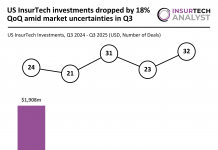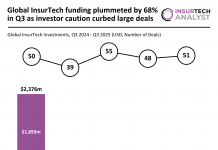Enterprise BI application modernisation is an incredible challenge with good quality data and insights at stake. Making an effective start in this area of development can translate into real project value. In this blog post, Anatoly Bankovsky, Delivery Manager at Symfa, a software development company, shares how his team managed to do exactly this during his recent project for a US-based carrier employing 6,000 people.
One of the biggest setbacks in software modernisation, the $300m fiasco of the “Cover Oregon” healthcare exchange – and many similar tales of woe – make CTOs think twice before touching a thing in the legacy software – and not without a reason. Yet, amidst the tribulations, there are always stories of success. One such triumph came through Anatoly Bankovsky, a Delivery Manager at Symfa, who shares the story of a successful Business Intelligence (BI) development project and what it takes to ensure that your software modernisation project goes as planned.
Clear problem positioning and expected value highlights
This BI project stood as a beacon of promise, with the market valued at US$ 25bn in 2023 and projected to grow at 5.83% annually, presenting a lucrative avenue for the client.
Thus, the three critical problems were identified:
- Slow application performance
- Inappropriate visualisation tooling (couldn’t handle the data load)
- Hampered user growth (the system lacked the capacities to allow new dealers to do the reporting)
After the modernisation, the users would get access to a simple, yet efficient functionality to generate reports fast. With logic unified and structured, the application would gain manageability and scalability.
Define your challenges – Here’s what Symfa’s looked like
Symfa’s project encountered challenges in decision-making – no big news for every enterprise player – handling denormalised data, and reforming the existing architecture.
An overly intricate system architecture, decoupled into multiple micro-services but utilising a single database, led to nightmarish debugging and operational complexities.
The team also encountered substantial challenges with Extract, Transform, Load (ETL) processes due to multiple data sources and inconsistent documentation.
What Symfa learnt and how it can make your knowledge transfer less turbulent
Studying technical documentation is a logical first step, but it’s often a missing element on enterprise projects, with everyone having too much on their plate to keep it. Make sure to set up more than a couple meetups for your new vendor with the previous tech team. It will help identify critical tech issues faster (like unresolved technical debt, critical bugs in production, etc.). Ideally, such technical consultations would include the client’s tech lead, previous tech vendor’s tech lead, a new vendor’s BA and a new architect.
Moreover, with high talent turnover in big corporations (in Symfa’s case a BA joined the project just four months earlier), the new vendor would benefit more from talking directly to those who were in charge of coding. Hidden skeletons and hot ugly fixes are not rare on enterprise projects. Let the tech leads have an honest discussion about what to do with that next. Otherwise this knowledge would be lost.
Read the full post here.
Keep up with all the latest FinTech news here.
Copyright © 2023 FinTech Global










